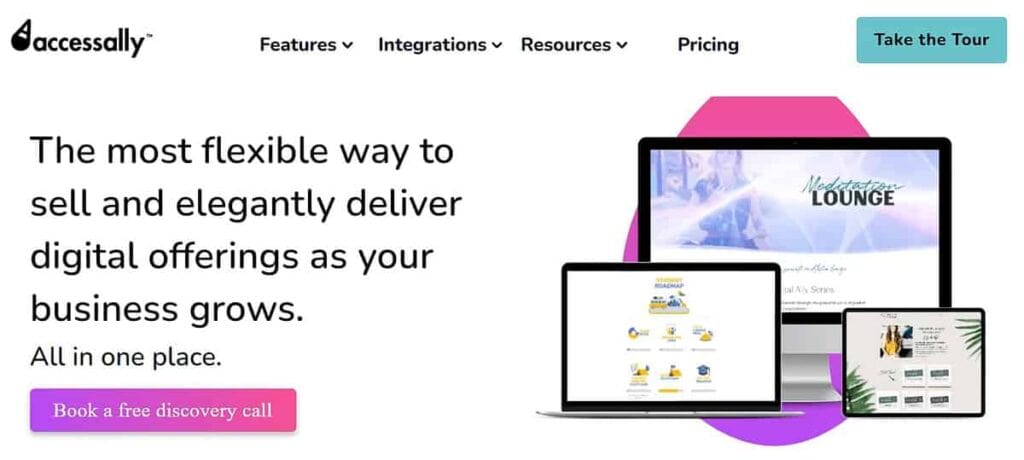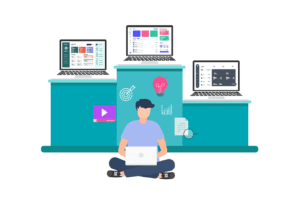Mastering eLearning content development is an essential skill for anyone looking to deliver high-quality online courses.
Whether you’re an educator, a corporate trainer, or an entrepreneur, understanding how to craft compelling, engaging, and effective eLearning content can be the key to your success.
This comprehensive guide aims to help you navigate the intricacies of eLearning content development. We will delve into the process of creating eLearning content, explore the benefits, examine the latest trends, and discuss various types of eLearning content.
We’ll also share best practices to ensure your eLearning courses stand out from the crowd.
From identifying your target audience and setting clear learning objectives to selecting the right platform and measuring the effectiveness of your content, we’ve got you covered.
By the end of this post, you’ll be well-equipped to create eLearning content that not only imparts knowledge but also keeps learners engaged and motivated!
Understanding eLearning content development
eLearning has emerged as a pivotal tool for disseminating knowledge and fostering skill development. At the heart of any successful eLearning program lies the process of content development.
In essence, eLearning content development is about crafting a learning journey that is engaging, effective, and tailored to the needs of the learner.
It’s about leveraging technology to create a custom educational experience that is more than just reading text on a screen but an interactive and enriching learning venture.
This process involves creating, organizing, and packaging information in a manner that facilitates online learning.
It’s a meticulous task that requires a deep understanding of instructional design principles, multimedia usage, interactivity, assessments, learner feedback, and personalization.
The importance of eLearning development cannot be overstated.
Well-developed course content should cater to the diverse needs of learners and empower them to learn at their own pace while retaining as much of the new knowledge as possible.
As we move towards an increasingly digitized world, the demand for eLearning is skyrocketing. The eLearning market is set to grow at a compound annual growth rate (CAGR) of 14% from 2023 to 2032.
This underscores the crucial role of eLearning content development in meeting the growing demand for quality online education.
eLearning content development is not just about creating content; it’s about designing an entire curriculum that fosters a fruitful learning environment.
This includes the delivery of the course, learner assessment, and support.
Types of eLearning content
In the realm of eLearning, content can take on many forms, each with its unique benefits and potential drawbacks. Understanding these various types can help you create a rich, diverse, and engaging learning experience.
Text-based content
This is the most traditional form of eLearning content, typically comprising eBooks, articles, and PDFs.
While text-based content is cost-effective and easy to produce, it can be less engaging if not supplemented with other forms of content. It’s best used for conveying detailed, complex information that requires careful reading and comprehension.
Video lectures
Video lectures are a popular choice in eLearning, mimicking the traditional classroom experience. They can be highly engaging and effective for visual learners.
However, they can be time-consuming and expensive to produce. Use video lectures to explain complex concepts, demonstrate procedures, or provide expert insights.
Interactive simulations
Simulations provide learners with a safe environment to practice skills and apply knowledge. They are highly effective for experiential learning but can be complex and expensive to develop.
They can be used for hands-on training for software tutorials or medical procedures, for example.
Quizzes
Quizzes provide immediate feedback, reinforcing learning and aiding retention. They’re simple to create but require careful design to ensure they accurately assess learning.
Educators may employ quizzes to test knowledge recall and comprehension and motivate learners through challenge and achievement.
Discussion forums
These foster a sense of community and encourage peer-to-peer learning. They require minimal setup but need active moderation to ensure a positive learning environment.
Discussion forums can be used to facilitate conversations, share resources, and encourage collaborative learning.
Podcasts
Audio content is convenient for learners on the go. However, it may not be suitable for complex topics that require visual aids. The best use for podcasts is for interviews, storytelling, or providing supplementary material.
Gamified learning activities
Gamification boosts engagement and motivation through elements like points, badges, and leaderboards.
While it can be highly engaging, it requires thoughtful designing to ensure the focus remains on learning, not just game-playing.
Educators can use gamification to make learning fun and to incentivize progress and achievement.
Incorporating a mix of these content types can cater to different learning styles and preferences, enhancing the overall learning experience.
Variety further enhances learner engagement and motivation, making the learning journey more enjoyable and effective.
Build Your Own Teaching Ecosystem, Customized to Reflect Your Teaching Style.
With AccessAlly, you’re creating your own platform to run courses, memberships, and communities on.

5 steps involved in eLearning content creation
The process of creating effective eLearning content can seem overwhelming. However, by following a systematic approach, you can create content that is engaging and aligned with your learners’ needs.
Here is a blueprint of practical steps you can take to create and distribute your eLearning content successfully:
1. Identify your target audience and set goals
Your starting point should be understanding your learners.
- Who are they?
- What are their needs, preferences, and existing knowledge and skills?
A HubSpot survey found that just 42% of marketers had a good understanding of their target audience, indicating a significant gap.
Failing to understand your audience can lead to wasted marketing budgets, poor engagement, and even business failure.
To define your audience, make sure to run through the following checklist of considerations:
- Demographics.
- Geographics.
- Psychographics.
- Behavioral patterns.
- Socio-economic status.
- Cultural background.
- Education level.
- Occupation.
- Life stage.
- Pain points.
- Needs.
- Digital behavior.
- Product/service usage rate.
- Benefits sought from a product/service.
- Channels of information.
- Price sensitivity.
Once you’ve identified your audience, set clear, measurable learning objectives that align with your learners’ needs and your course goals.
2. Select the right eLearning platform
An eLearning platform enables users to develop, deliver, and monetize eLearning content.
It plays a pivotal role in the modern education landscape by providing a wide range of tools and features tailored to different learning needs and objectives. Among the various types are:
- Learning Management Systems (LMS): LMS platforms are the cornerstone of eLearning because they offer a centralized hub for course administration, tracking, and assessment. Instructors can create courses, manage user access, track progress, and assess performance. Students benefit from structured content delivery, assessments, and a collaborative environment.
- Content Management Systems (CMS): CMS platforms are focused on content creation and organization, providing tools for creating and managing digital learning materials, including text, images, videos, and interactive elements. Content can be easily edited and repurposed for various courses and modules.
- Learning Content Management Systems (LCMS): LCMSs combine the features of both LMS and CMS. They offer robust content creation and management capabilities along with course delivery and assessment tools. LCMS platforms are particularly useful for organizations that need to create and reuse content across multiple courses.
- Massive Open Online Courses (MOOCs): These are designed to deliver courses to a massive audience, often for free or at a lower cost. They leverage the internet’s reach to provide access to high-quality educational content from renowned institutions and educators, making education accessible to a global audience.
- Learning Experience Platforms (LXP): LXPs focus on enhancing the overall learning experience. They use personalized recommendations, social learning features, and content curation to engage learners, often prioritizing informal and self-directed learning to foster a culture of continuous learning within organizations.
- Virtual Learning Environments (VLE): These platforms provide a comprehensive digital environment for educational institutions, including tools for course management, communication, collaboration, and assessment. VLEs are commonly used in schools, colleges, and universities to support both online and blended learning.
- Mobile learning apps: Mobile learning apps cater to the growing demand for on-the-go learning. They offer bite-sized content, quizzes, and interactive lessons optimized for smartphones and tablets, enabling learners to access educational materials wherever and whenever they want.
- Social learning platforms: These platforms facilitate collaborative learning through social interactions, empowering learners to share knowledge, participate in discussions, and collaborate on projects. They leverage the power of online communities to enhance learning experiences.
- Microlearning platforms: Microlearning platforms focus on delivering short, focused learning modules or lessons. They are designed to meet the needs of busy learners by providing quick, easily digestible content, which is especially effective for reinforcing knowledge and skills.
When choosing a platform, consider its features, user-friendliness, scalability, and cost.
If you’re using WordPress, then AccessAlly should be your go-to.
AccessAlly stands out among other eLearning means, offering an all-in-one solution for running, automating, and scaling online businesses through courses, group coaching, memberships, and more.
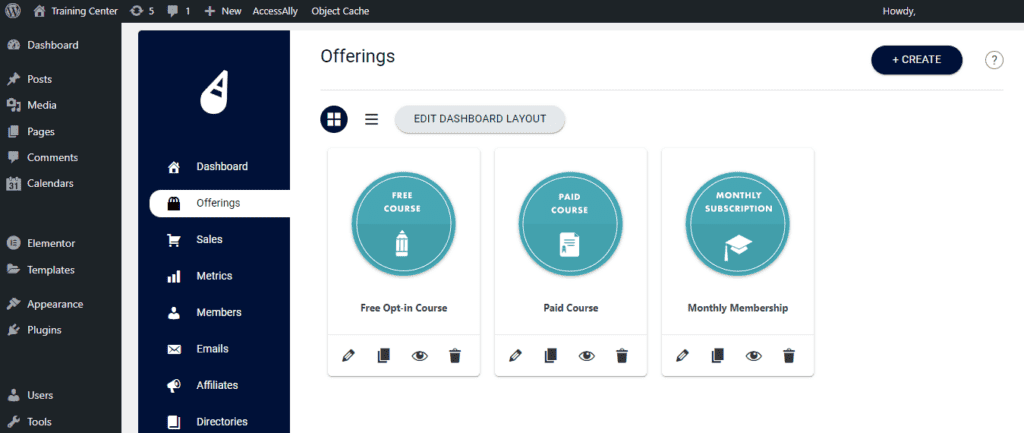
Teachable, Udemy, and Sensei are also useful platforms to consider.
3. Create your content
Effective eLearning content often involves a mix of multimedia, interactivity, and bite-sized learning chunks. Some tools that facilitate contention creation include Canva, Screenflow, and Recut.
- Conduct in-depth research into competing eLearning content to get inspiration and insight into what resonates with your audience.
- Regularly update and add new content to keep your offerings fresh. Evergreen content and learner cohorts can assist in this endeavor.
- Providing exclusive access to content through a membership model as the way you create content can also influence monetization.
If you’re looking to get started with a leading solution that can facilitate these steps, AccessAlly simplifies content creation and allows for easy migration of existing content from other platforms.
4. Maximize engagement
Creating engaging content, such as incorporating gamification, can significantly enhance the learning experience. In fact, 83% of users feel motivated when corporate training is gamified.
Providing opportunities for collaboration, such as learner cohorts and online communities, and personalizing learning paths can also boost engagement. AccessAlly supports these strategies with its gamification features like awarding points and personalized experiences with milestone badges.


5. Monitor and optimize results
To measure the effectiveness of your eLearning content, use learner assessments, feedback, and analytics. Leverage these insights to continuously improve your content and your course.
AccessAlly offers features such as user progress tracking and private notes for one-to-one learner feedback and communication to assist in the evaluation and optimization process.
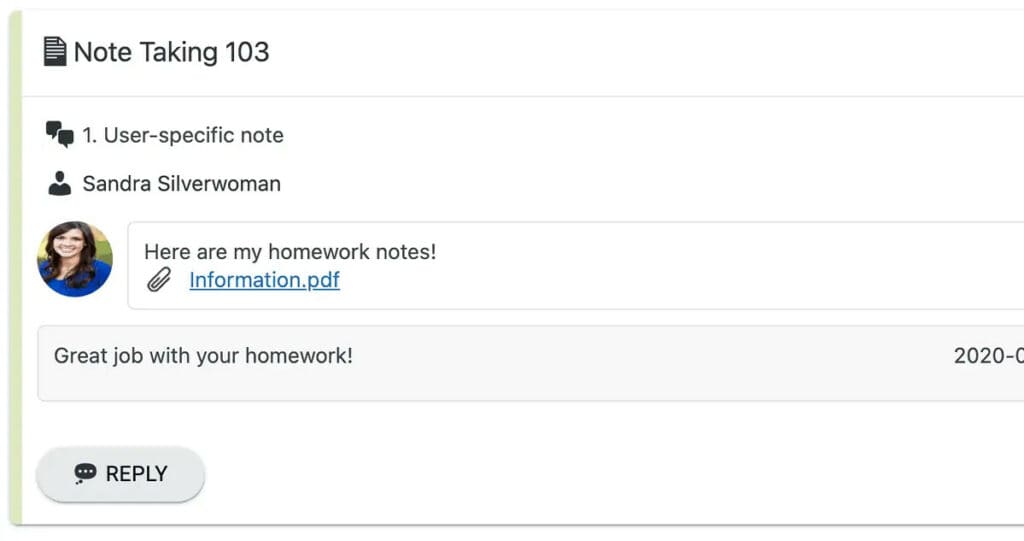
Creating engaging eLearning content with AccessAlly
Creating interesting eLearning content can be a breeze with the right tools at your disposal. AccessAlly is a tried and true multi-functional LMS plugin designed to streamline the process of eLearning development.
It offers a suite of features that cater to the diverse needs of online educators, enabling them to create, manage, and deliver effective and engaging eLearning content.
AccessAlly’s key features
- One-stop solution for online course creators, eliminating the need to juggle multiple platforms. With AccessAlly, you can manage and sell your offerings, and create stunning learning experiences, all from one place.
- Personalized automation capabilities that allow you to automate aspects of your eLearning program, including enrollment, content delivery, and follow-ups. This not only saves you time but also ensures a personalized and seamless learning experience for your learners.
- Gamification elements that you can incorporate into your eLearning content to boost learner motivation and engagement, like points, badges, and leaderboards.
AccessAlly’s capabilities have been employed by numerous businesses to create successful eLearning content.
For instance, Melissa Ramos, a health coach and owner of Sexy Lady Balls, leveraged AccessAlly’s comprehensive platform to create a membership site for women’s wellness.
Her website made excellent use of AccessAlly’s gamified elements and content delivery, boosting the success of her online business.
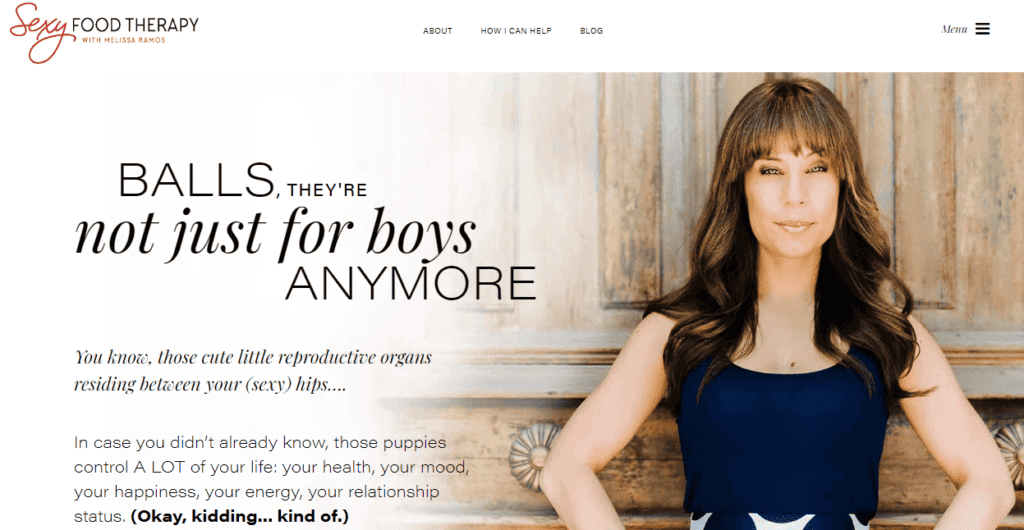
Melissa had this to say:
“I went from running a membership site, almost scrapping it, to turning it around completely after we switched to using the AccessAlly platform.”
Action plan: Master eLearning content development with AccessAlly
Creating high-quality educational content is a necessity in the ever-evolving digital landscape. Mastering eLearning content development is a multi-step process that begins with understanding your target audience and setting clear goals.
This is followed by selecting the right eLearning platform, creating engaging and effective content, maximizing learner engagement, and continuously monitoring and optimizing your results.
AccessAlly can be an invaluable partner in this endeavor.
Its exhaustive assortment of features, user-friendly interface, personalized automation, and gamification options make it a robust tool for eLearning content creators.
Whether you’re developing text-based content, video lectures, interactive simulations, or gamified learning activities, AccessAlly provides the features and flexibility to make your eLearning content shine.
The future of learning is digital, and the demand for quality eLearning content is only set to grow. Don’t get left behind – try AccessAlly today and start your journey towards mastering eLearning content development!

